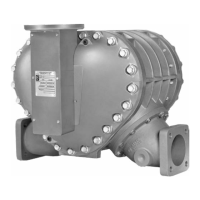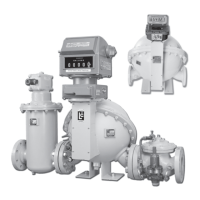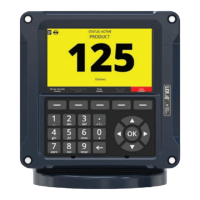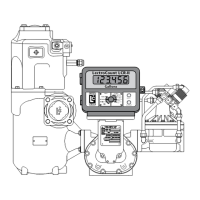INTRODUCTION
Safety Procedures .................................................... 3
Owner’s Information Packet ..................................... 4
Serial Number Plate Locations ................................. 5
How LC Meters Work ............................................... 6
INSTALLATION & OPERATION
Installation Requirements ......................................... 7
Operation Requirements .......................................... 8
Meter Start Up and Operation .................................. 9
Reversing the Meter Registration ............................ 10
Setting the Standard Adjuster ................................. 11
TABLE OF CONTENTS SAFETY PROCEDURES
MAINTENANCE
Maintenance Requirements .................................... 12
Relieving Internal Pressure ..................................... 13
Servicing the Drive Components ............................. 13
Removing the Dust Cover ...............................................13
Removing the Adjuster and Adjuster Drive Assembly .....14
Servicing the Packing Gland ...........................................15
Packing Gland Retaining Plate .......................................15
Disassembling the Meter ......................................... 16
Removing Non-Corroded Rotor Gears............................17
Removing Corroded Rotor Gears ...................................17
Reassembling the Meter ......................................... 18
Timing the Rotor Gears ...................................................19
Torque Chart ...................................................................21
Wrench and Socket Size Chart .......................................21
Troubleshooting ....................................................... 22
How to Order Replacement Parts ........................... 23
BILL OF MATERIALS
Bill of Materials ........................................................ 24
This manual provides warnings and procedures that are intended to inform the owner
and/or operator of the hazards present when using the Liquid Controls Meter on LP-
Gas and other products. The reading of these warnings and the avoidance of such
hazards is strictly in the hands of the owner-operators of the equipment. Neglect of
that responsibility is not within the control of the manufacturer of the meter.
NOTICE
The most current English versions of all Liquid Controls publications are available on our web site, www.lcmeter.com. It is the
responsibility of the local distributor to provide the most current version of LC manuals, instructions, and specication sheets in
the required language of the country, or the language of the end user to which the products are shipping. If there are questions
about the language of any LC manuals, instructions, or specication sheets, please contact your local distributor.
Publication Updates and Translations
! WARNING
Be Prepared
• Before using this product, read and understand the instructions.
• All work must be performed by qualied personnel trained in the proper application, installation, and
maintenance of equipment and/or systems in accordance with all applicable codes and ordinances.
• When handling electronic components and boards, always use proper Electrostatic Discharge (ESD)
equipment and follow the proper procedures
• Make sure that all necessary safety precautions have been taken.
• Provide for proper ventilation, temperature control, re prevention, evacuation, and re management.
• Provide easy access to the appropriate re extinguishers for your product.
• Consult with your local re department, state, and local codes to ensure adequate preparation.
• Read this manual as well as all the literature provided in your owner’s packet.
• Save these instructions for future reference.
• Failure to follow the instructions set forth in this publication could result in property damage, personal injury,
or death from re and/or explosion, or other hazards that may be associated with this type of equipment.
Before disassembly of any meter or accessory component:
For Safety Rules, refer to local authorities and relevant NFPA Codes.
! WARNING
Be Prepared
IN THE EVENT OF LARGE FIRES OR FIRES THAT ARE SPREADING
n Evacuate the building and notify your local re department.
n Stop the leakage only if you can safely reach the equipment.
CONTROL
n Stop the leakage if you can safely reach the equipment.
n Use the appropriate extinguisher: Class B re extinguisher, water, fog, etc.,
depending on the materials.
n If in doubt, call your local re department.
!
a Gas Fire
IN THE EVENT OF A LARGE GAS LEAK
n Evacuate the area and notify the re department.
n Stop the leak and prevent accidental ignition.
n Prevent the entrance of gas into other portions of the buildings. Some gases, such
as LPG, seek lower levels, while other gases seek higher levels.
n Evacuate all people from the danger zone.
n See that the gas is dispersed before resuming business and operating motors.
If in doubt, notify your local re department.
!
a Gas Leak
3
2
